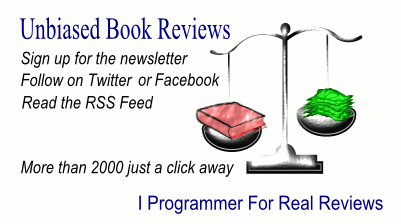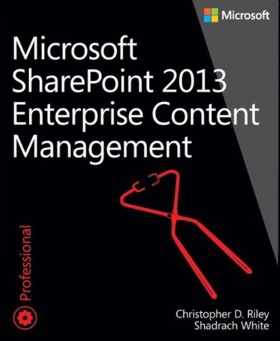| Microsoft SharePoint 2013: Enterprise Content Management |
|
Authors: Christopher Riley & Shadrach White Enterprise Content Management may not seem a topic of particular interest to programmers, but it’s a topic you need to understand if you’re going to create SharePoint systems that work. After all, a SharePoint system is of little use without the data it contains. Even if you do understand ECM, chances are that the business people you’re working with are pretty hazy on what it involves, in which case this would be a good book for them to read.
The authors begin with a chapter explaining what ECM means, alongside the four parts of the ECM stack. This is also known as the document lifecycle – capture, store, manage and deliver. The next two chapters look at these stages in more detail, looking at the different data sources you’re likely to be dealing with, how to get your storage structure right in terms of it being scalable, and how SharePoint interacts with Microsoft SQL Server. The way SharePoint works in terms of workflows, and content routing are introduced, though I thought this topic could have been given more coverage. Content management and delivery get a shared chapter. As elsewhere in the book, there’s a mix of theoretical discussion. Topics such as ‘who manages content?’ are more about business practice than SharePoint technicalities, but then repository security and the recycle bin settings is very hands on. The next chapter is a set of example deployments for small scale, large scale, and line of business applications. The studies are quite practical, discussing aspects such as the size of content databases, the taxonomy of managed metadata, and showing exactly how to create the systems within SharePoint. There were some really useful tips in this chapter, such as the advice when designing the taxonomy to never use catchall terms such as ‘other’ to cover things you’ve not thought of, as users will tend to just put far too much of the data into that because it’s easy. You know that’s true, but it’s good advice anyway.
This practical chapter is followed by a couple of more philosophical chapter on building an ECM team, user adoption, and an ECM planning guide that boils down to how to create good documentation. A chapter on records management is more practical, covering aspects such as the retention schedule , and SharePoint’s record management features and processes. If records management has the subplot of ‘making sure you meet legal retention requirements’, the next chapter on eDiscovery could be subtitled ‘getting all the data out for litigation’. The authors point out that the accepted cost range for retrieving a gigabyte of data for eDiscovery is between $18,000 and $30,000, so this is something you want to get right first time. This was an interesting chapter, with some good ideas and advice. The next topic for consideration, Extending SharePoint 2013 ECM solutions, could have gone a lot further, and the book would have been more interesting for programmers. The authors look at Office 365 used with SharePoint, then touch on a number of third party services and tools for tasks such as backup and recovery, business intelligence, remote BLOB storage, and document imaging. The book ends with a chapter on the benefits of CloudShare and the SharePoint community group. Taken as a whole, this is a useful read if you need to interact with SharePoint systems. It would also be useful if you need to educate people not familiar with creating SharePoint systems in the political and business challenges of creating a SharePoint content management system that works and is used. If you’ve worked with SharePoint before, the usefulness is harder to judge. It all seems quite obvious, but I still felt that it had improved the chances I’d create a good ECM system because of what I’d learnt. There’s more useful material than you might imagine, and the ‘real world’ snippets of advice make it worth the effort of reading it. Related Articles
|
|||
| Last Updated ( Monday, 23 June 2014 ) |

